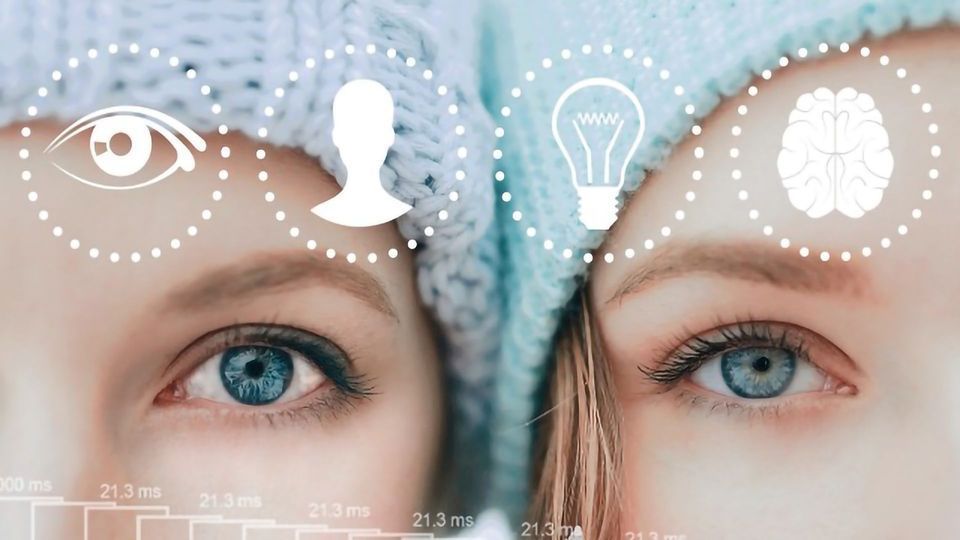New Type of Memory Identified by Behavioral Researchers

Complete the form below to unlock access to ALL audio articles.
New research indicates the existence of an unconscious iconic memory store that supports predictions made by one of the leading theories of consciousness, called the global workspace theory. It also shows that visual masking, a well-established technique used to alter our perception, does not erase memory traces of masked images but only limits conscious access.
The mask of memory
Imagine sitting in front of a computer screen and seeing an image flashing up for a short time. You would likely be able to gather a lot of information from this brief image (including the meaning if it was a written word). However, if a distracting pattern (a “mask”) was shown shortly after, you most likely wouldn’t even be aware that there was an image before the pattern. This phenomenon is known as visual masking and was believed to occur because the mask erases or overwrites memory traces of the first image. Now, new research indicates that this is not the case, and that information is preserved in a buffer store that cannot be consciously accessed but can enter awareness through repetition.
A new study published in Scientific Reports expanded on the method of visual masking to make new discoveries into conscious perception. As was expected, masked images were poorly perceived. However, when the same masked images were repeated in quick succession, perception improved dramatically, to the point where participants reported seeing the masked images clearly and were able to correctly describe and identify the masked image. Interestingly, when the repetition spacing was increased, perception became poorer to the point where it was indistinguishable from normal masking without repetition. This finding shows that perception didn’t simply improve because there were more detection opportunities, since the same amount of detection chances, spaced slightly further apart, did not improve perception.
Instead, this behavioural finding indicates that the mask neither erased nor overwrote memory traces of the first image; if the memory trace was lost, then each repeated iteration would have started from the same baseline and repetition would not have improved the viewer’s ability to perceive the image. For perception to improve, information needs to be retained.
Memories stored in our unconscious
The study suggests that information is retained for very short periods but with limited conscious access. Only if confirmatory data accumulates in this buffer store, will the information in this memory be consciously accessible by the viewer.
The global workspace theory suggests that most brain process occur unconsciously and that consciousness is like a spotlight that brings a few of these processes to our awareness through selective attention. When a process is ‘under the spotlight’, its information is broadcast throughout the brain. Incoming perceptual information has to compete for awareness. Perception is the result of bottom-up and top-down processes: top-down directed attention and bottom-up stimulus strength both play an important part in what ultimately enters awareness. This process requires information to be stored subliminally and has led to predictions for the existence of an unconscious memory buffer store that lasts at least a few hundreds of milliseconds. This new study offers behavioural evidence in support of such a buffer store.
This newly described memory buffer is time-sensitive. Meaningful extraction of images from the buffer becomes severely compromised after around 300 milliseconds and is almost completely lost after 700 milliseconds. This time course is strikingly similar to the duration of iconic memory, which is a conscious memory store that holds visual information for short periods of times. While this memory buffer resembles iconic memory in many ways, the stark difference is that its content can be stored unconsciously. For this reason, this memory store does not seem to fit into any existing memory classification but conforms to the theoretical predictions made by the global workspace theory (see grey box).
This study also shows that perception of a visual stimulus can be controlled to a very high degree when masked and repeated by varying the repetition interval. Future research in the areas of perception, consciousness, memory and attention could employ this method to control awareness. For example, researchers could use this method to show images right at the fringe of awareness, which means that a small lapse in attention during the repetition cycle would likely prevent participants from seeing the image. As such, this method could be used to test attention, for example while participants are being distracted or are preoccupied by other tasks.
This study offers an exciting new puzzle piece in understanding visual perception and conscious awareness of environmental data. It lends support to one of the leading theories of consciousness by providing empirical evidence for one of its predictions. As with all new findings, future research should aim to independently confirm these results.
Reference:
Pang DKF, Elntib S. Strongly masked content retained in memory made accessible through repetition. Sci Rep. 2021;11(1):10284. doi:10.1038/s41598-021-89512-w

